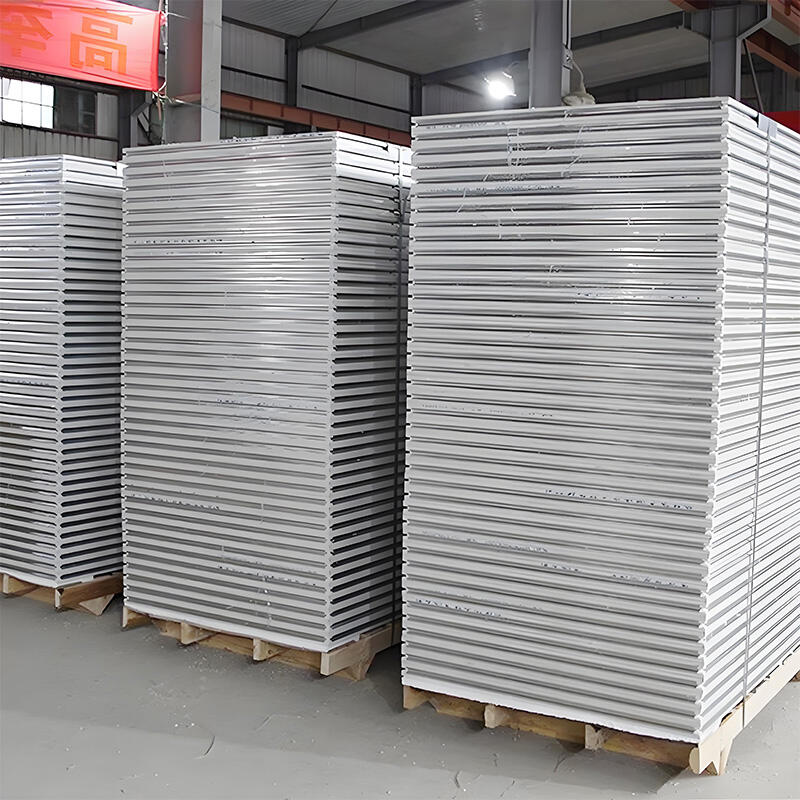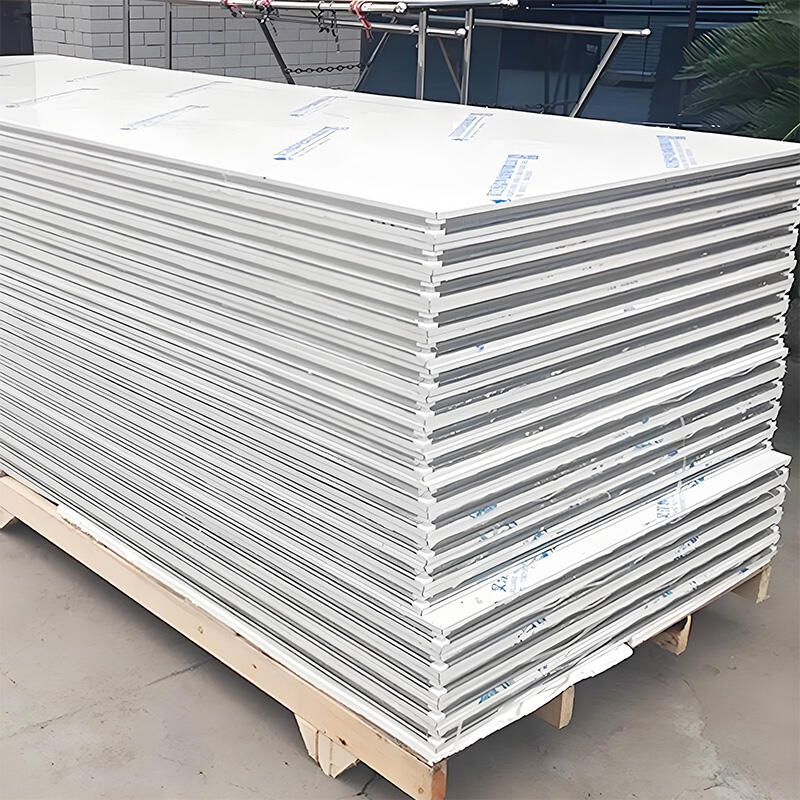Enhancing Building Safety Through Advanced Insulation Technology
The construction industry has witnessed remarkable advancements in fire-resistant building materials, with rock wool sandwich panels emerging as a leading solution for modern fireproof structures. These innovative panels combine superior thermal insulation with exceptional fire resistance, making them an invaluable choice for architects and builders focused on safety-first design approaches. As urban development continues to prioritize fire safety measures, rock wool sandwich panels have become increasingly central to achieving robust building protection.
The integration of rock wool sandwich panels in contemporary architecture represents a significant leap forward in building safety technology. These panels are engineered to withstand extreme temperatures while maintaining their structural integrity, offering a level of protection that traditional building materials simply cannot match. Their growing adoption in commercial, industrial, and residential projects demonstrates a clear shift toward more sophisticated fire safety solutions.
Understanding Rock Wool Sandwich Panel Construction
Core Material Composition and Properties
Rock wool sandwich panels consist of a carefully engineered core made from mineral wool fibers, derived from natural rock materials melted at high temperatures. This core is sandwiched between two metal facings, typically steel or aluminum, creating a robust composite structure. The mineral wool fibers are arranged in a specific pattern that enhances both thermal resistance and fire protection capabilities.
The unique composition of these panels results in exceptional fire-resistant properties. The core material can withstand temperatures exceeding 1000°C without melting or producing toxic fumes, making rock wool sandwich panels an ideal choice for buildings requiring stringent fire safety measures. Additionally, the dense fiber structure provides excellent acoustic insulation and moisture resistance.
Manufacturing Process and Quality Standards
The production of rock wool sandwich panels involves a sophisticated manufacturing process that ensures consistent quality and performance. Raw materials undergo careful selection and testing before being transformed into the final product. The mineral wool is produced through a controlled melting and spinning process, creating fibers with specific dimensions and properties.
Industry standards and quality control measures are rigorously applied throughout the manufacturing process. Each panel must meet strict requirements for fire resistance, thermal performance, and structural integrity. Regular testing and certification ensure that rock wool sandwich panels maintain their protective properties throughout their service life.
Fire Safety Benefits and Performance
Superior Fire Resistance Characteristics
Rock wool sandwich panels demonstrate exceptional fire resistance properties that set them apart from alternative building materials. The non-combustible nature of the mineral wool core prevents fire spread and helps maintain the structural stability of the building during fire events. These panels achieve high fire ratings, often providing up to four hours of fire protection in standard testing conditions.
The thermal stability of rock wool sandwich panels means they maintain their shape and integrity even when exposed to intense heat. This characteristic is crucial for containing fires within compartments and preventing structural collapse, giving occupants valuable time to evacuate and firefighters additional time to respond effectively.
Smoke and Toxic Emission Control
One of the most significant advantages of rock wool sandwich panels is their ability to minimize smoke generation and toxic emissions during fire events. Unlike many synthetic materials, these panels do not release harmful substances when exposed to high temperatures. This characteristic is particularly important in enclosed spaces where smoke inhalation poses a serious risk to occupants.
The panels' composition actively contributes to improved air quality during fire incidents, reducing the risk of smoke-related injuries and fatalities. This feature has made rock wool sandwich panels particularly popular in buildings with high occupancy rates, such as hospitals, schools, and commercial centers.
Installation and Maintenance Considerations
Professional Installation Requirements
Proper installation of rock wool sandwich panels is crucial for achieving optimal fire protection performance. Qualified contractors must follow manufacturer specifications and building codes to ensure correct panel alignment, joint sealing, and fastening methods. The installation process requires attention to detail, particularly around openings, penetrations, and panel connections.
Special consideration must be given to the interface between panels and other building components to maintain the integrity of the fire barrier system. Proper installation techniques help prevent thermal bridges and ensure consistent protection throughout the building envelope.

Long-term Maintenance and Durability
Rock wool sandwich panels require minimal maintenance while offering exceptional durability. Regular inspections should focus on checking joint seals, panel connections, and surface conditions to ensure continued performance. The panels' resistance to moisture and biological growth contributes to their long-term reliability and reduced maintenance needs.
With proper care, these panels can maintain their fire-resistant properties and structural integrity for decades. The durability of rock wool sandwich panels makes them a cost-effective choice for building owners focused on long-term safety and performance.
Frequently Asked Questions
What makes rock wool sandwich panels different from other insulation materials?
Rock wool sandwich panels stand out due to their unique combination of fire resistance, thermal insulation, and structural properties. Unlike traditional insulation materials, they offer comprehensive protection while maintaining their integrity under extreme conditions. The mineral wool core's non-combustible nature and ability to withstand high temperatures make these panels particularly effective for fireproof construction.
How long do rock wool sandwich panels typically last?
When properly installed and maintained, rock wool sandwich panels can last for 40-50 years or more. Their durability is attributed to the stable mineral wool core and protective metal facings, which resist degradation from environmental factors. Regular inspections and proper maintenance can help extend their service life even further.
Are rock wool sandwich panels environmentally friendly?
Rock wool sandwich panels are considered environmentally sustainable as they are manufactured from natural rock materials and can be recycled at the end of their life cycle. The production process has been optimized to reduce energy consumption and environmental impact. Additionally, their excellent thermal insulation properties contribute to reduced building energy consumption and lower carbon emissions.


